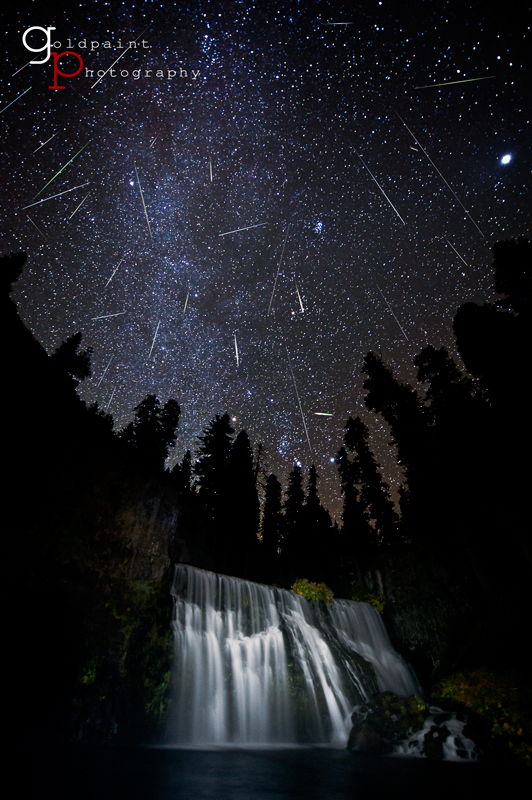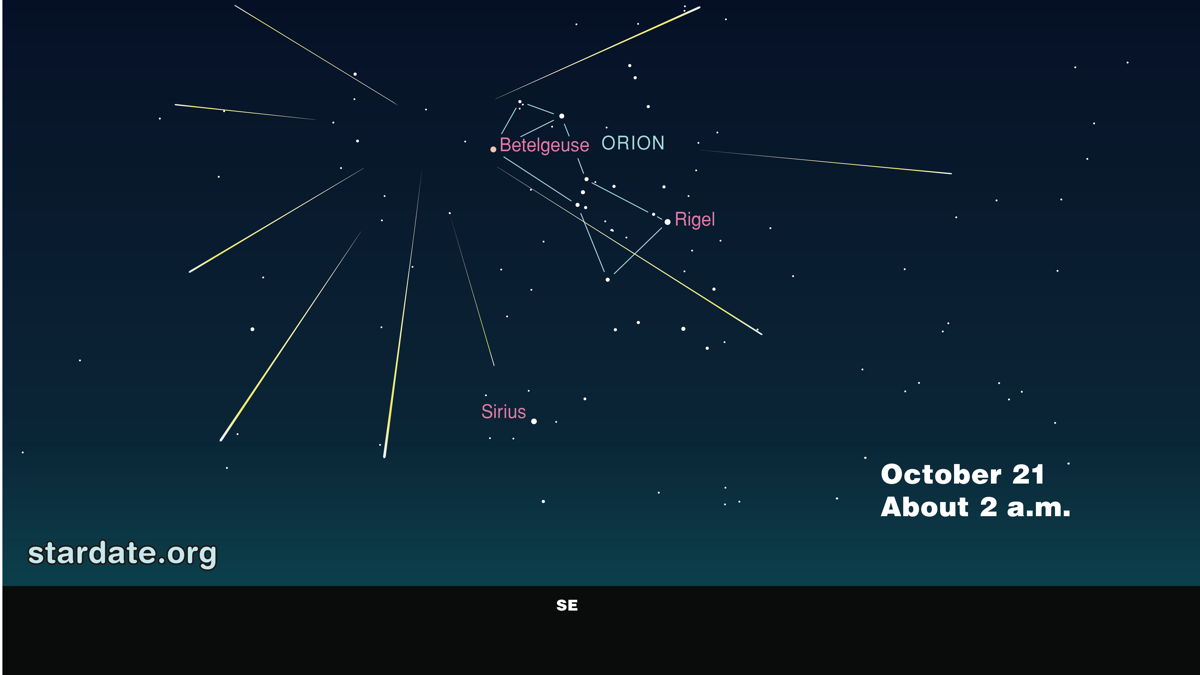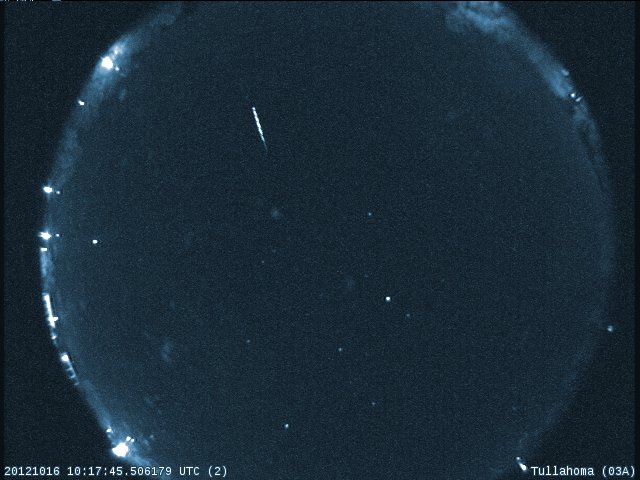Orionid Meteor Shower Peaks Tonight: How to Watch Online

Editor's Note: The peak of the Orionid meteor shower has passed. See our full wrap story and new photos here: Orionid Meteor Shower Wows Weekend Stargazers
The Orionid meteor shower will rain bits of Halley's Comet on Earth tonight in a promising weekend "shooting star" display. You can even watch the celestial fireworks online if bad weather spoils your local view.
The 2012 Orionid meteor shower will peak early Sunday (Oct. 21), but should still be an impressive sight throughout the overnight hours of late Saturday, NASA scientists say. The space agency will stream live meteor shower views from an all-sky camera at its Marshall Space Flight Center in Huntsville, Ala.
"Earth is passing through a stream of debris from Halley's Comet, the source of the Orionids," meteor expert Bill Cooke of NASA's Meteoroid Environment Office said in a statement. "Flakes of comet dust hitting the atmosphere should give us dozens of meteors per hour."
The best time to see the Orionid meteor shower is before sunrise on Sunday morning. At that time, Earth will be passing through the densest part of the Halley's Comet debris stream. [Photos: Orionid Meteor Shower of 2012]
The Orionids appear to radiate out of the well-known constellation Orion, hence their name. In the predawn hours this weekend, the constellation is visible in the southern sky.
"Since 2006, the Orionids have been one of the best meteor showers of the year, with counts in some years up to 60 or more meteors per hour," Cooke said.
Breaking space news, the latest updates on rocket launches, skywatching events and more!
NASA's live view of the Orionids begins tonight at 11 p.m. EDT and ends at 3 a.m. EDT on Sunday (0300 to 0700 GMT). The space agency will provide a Ustream feed of the Orionids from its all-sky camera, as well as a web chat with astronomer Mitzi Adams to answer reader questions. You can access the webcast and video stream here at 11 p.m. tonight: http://www.nasa.gov/connect/chat/orionids2012.html

If you plan to watch the Orionids with your own eyes, here are a few meteor-watching tips:
Find a dark sky:While the Orionids have been a fairly dependable meteor shower in recent years, the best viewing conditions are in places far from city lights, which can hamper your view.
Dress warmly:You may want to take your time observing the Orionids, so a warm jacket to ward off the predawn chill may prove useful.
Get comfortable:A reclining lawn chair or other comfy seat can help ease neck strain from constantly looking up for a glimpse of meteors. Add a blanket and a cup of hot chocolate and you've got cozy meteor-hunting night out!

The Orionid meteor shower is one of two meteor displays created by the dusty leftovers of Halley's Comet. The other celestial light show is the Eta Aquarid meteor shower in May.
There is also more to this weekend's night sky than just the Orionids.
By coincidence, Saturday is Astronomy Day and the online Slooh Space Camera will provide a free 11-hour marathon webcast of night sky views from its telescopes around the world. The Astronomy Day live webcast begins at 3:30 p.m. EDT (1930 GMT) on the Slooh website and will feature views of the planets and moons in our solar system, as well as nebulas and supernovas.
The webcast can be accessed directly at the Slooh Space Camera website here: http://events.slooh.com/
NASA officials said there's plenty of other naked-eye sky targets to seek out while trying to observe the Orionids.
"In addition to Orionids, you'll see brilliant Venus, red Mars, the dog star Sirius and bright winter constellations such as Orion, Gemini and Taurus," NASA officials said in a skywatching advisory. "Even if you don't spy a meteor, the rest of the sky is dynamite!"
Editor's Note: If you snapped any photos of the Orionid meteor shower and want to share them with SPACE.com, send the pictures, comments and location info to managing editor Tariq Malik at tmalik@space.com.
You can follow SPACE.com Managing Editor Tariq Malik on Twitter @tariqjmalik and SPACE.com on Twitter @Spacedotcom. We're also on Facebook & Google+.

Join our Space Forums to keep talking space on the latest missions, night sky and more! And if you have a news tip, correction or comment, let us know at: community@space.com.

Tariq is the Editor-in-Chief of Space.com and joined the team in 2001, first as an intern and staff writer, and later as an editor. He covers human spaceflight, exploration and space science, as well as skywatching and entertainment. He became Space.com's Managing Editor in 2009 and Editor-in-Chief in 2019. Before joining Space.com, Tariq was a staff reporter for The Los Angeles Times covering education and city beats in La Habra, Fullerton and Huntington Beach. In October 2022, Tariq received the Harry Kolcum Award for excellence in space reporting from the National Space Club Florida Committee. He is also an Eagle Scout (yes, he has the Space Exploration merit badge) and went to Space Camp four times as a kid and a fifth time as an adult. He has journalism degrees from the University of Southern California and New York University. You can find Tariq at Space.com and as the co-host to the This Week In Space podcast with space historian Rod Pyle on the TWiT network. To see his latest project, you can follow Tariq on Twitter @tariqjmalik.
